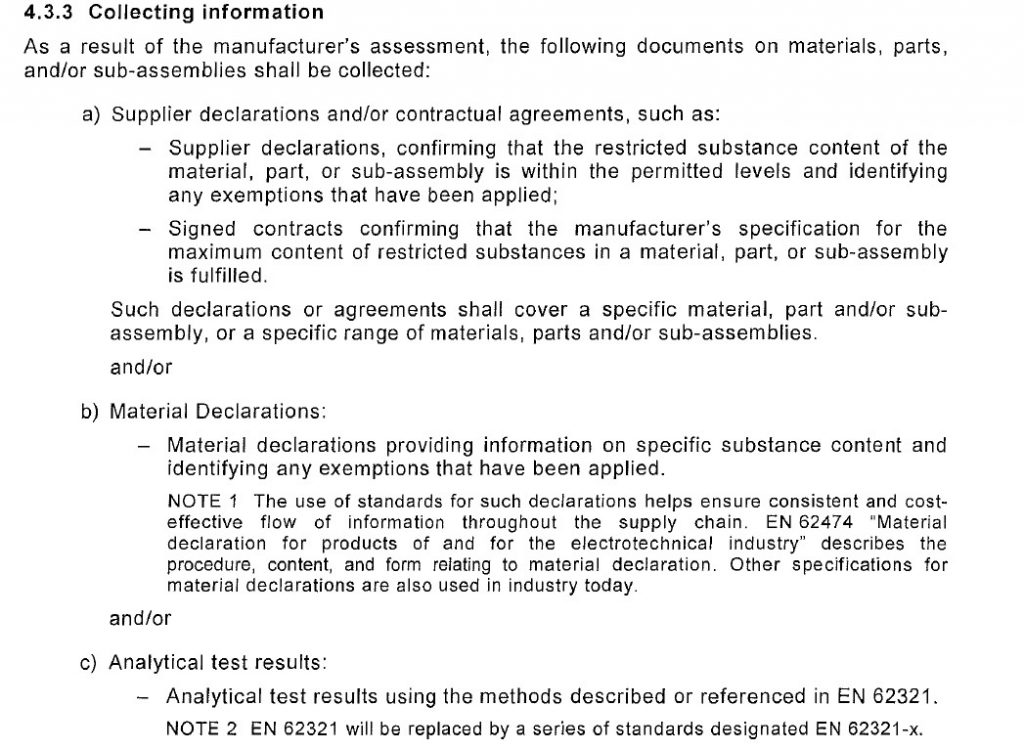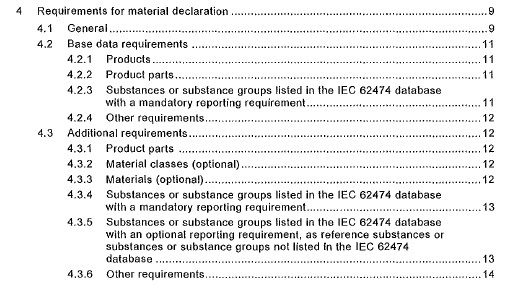Manufacturers that send equipment to the EU with a CE marking must understand that a CE marking is a blanket claim by the manufacturer. The claim is that the equipment complies with any applicable CE marking Directive. This article is meant to explain the documentation required for the assembly of a report to back up that claim of compliance.

In many cases that means the Restriction of Hazardous Substances Directive 2011/65/EU, also called “RoHS” or “RoHS2”. RoHS applies to almost everything that can be defined as ‘electrical and electronic equipment’ (aka ‘EEE’) per Article 3 (1) and fitting into any of the categories listed in Annex I:
ANNEX I
Categories of EEE covered by this Directive
- Large household appliances.
- Small household appliances.
- IT and telecommunications equipment.
- Consumer equipment.
- Lighting equipment.
- Electrical and electronic tools.
- Toys, leisure and sports equipment.
- Medical devices.
- Monitoring and control instruments including industrial monitoring and control instruments.
- Automatic dispensers.
- Other EEE not covered by any of the categories above.

Proving compliance to RoHS means compiling a report using the sole harmonized standard for RoHS compliance: EN 50581:2012 Technical documentation for the assessment of electrical and electronic products with respect to the restriction of hazardous substances.
EN 50581:2012 details the process for collecting, evaluating, and organizing the information needed to prove that a product which is in the scope of RoHS 2011/65/EU is compliant. Manufacturers will need to collect supporting information for every component in the subject equipment, including labels, paint, glue… everything.
Clause 4.3.3 indicates the information required, see below.

4.3.3 (a) indicates that a supplier declaration or a contractual agreement can be used. The first indent defines a ‘supplier declaration’. Simply put, this should be a document, on company letterhead, that identifies the part by part number and affirmatively claims compliance for that part to the RoHS 2011/65/EU restriction levels. It should be signed and dated as well. The second indent states that a contract can be used for this purpose as well. This could be a purchase order from the buyer (in this case, the manufacturer of the EEE that is in the scope of RoHS) stating that the parts must be compliant, and signed by the manufacturer of the part.
4.3.3 (b) lists the requirements for a material declaration. A material declaration is a much more formal document and it lists the specific content of each of the restricted substances in the part. Additionally, it refers to another standard, EN 62474:2012 Material declaration for products of and for the electrotechnical industry (IEC 624 7 4:2012 (EQV)). A review of EN 62474 directs the reader to clause 4, and then multiple instructions and requirements in clause 4.2 and 4.3. See below the descriptors for these clauses in the contents section of EN 62474:

The immediate takeaway from a comparison of EN 50581:20102, clause 4.3.3 (a) vs (b) is that a supplier declaration (or a properly formatted and signed purchase order) can be compiled more quickly and expediently than a material declaration.
Next, clause 4.3.3 (c) from EN 50581:2012 is explained. That section indicates that a manufacturer of a part can supply a test report, showing that the component was taken apart, chemically, in a laboratory and evaluated for its composition. These reports are common and, as a side-note, I have compiled EN 50581:2012 reports for F2 Labs customers based on laboratory reports for almost every component in the product.
F2 Labs can help your company get a handle on RoHS 2011/65/EU and most other EU requirements. Have a question or a comment? We can be contacted via this link. We can be reached by phone at 877-405-1580 and are here to help you.

